CULTURE CLASH
a venue for Galveston’s free thinkers











Our team is deeply passionate about revealing the stories that have been buried or forgotten, stories that shape our little slice of heaven. Long before Galveston became the place we know today, our island was known as the Free State of Galveston—a haven for pirates, outlaws, and those seeking a life unbound by the constraints of the mainland.
In the early 19th century, Galveston was briefly home to the infamous privateer Jean Laffite. He established a colony on the island, turning it into a bustling hub of smuggling and privateering. Though he was only here for a few years, his presence transformed Galveston into a place where the rules were different, the line between lawful and unlawful was blurred, and freedom was defined by those daring enough to seize it.
Today, that legacy lives on in the island’s culture, festivals, and even in the spirit of its people. Galveston’s history as the Free State is not just a tale of piracy—it’s a story of resilience, independence, and a refusal to be tamed by the conventional. This enduring legacy is what connects us to the island's rich history.
As we dive into Galveston’s pirate history in this issue, we urge you to look beyond the surface and discover the untamed spirit that still courses through the island. Whether in the stories passed down through generations, the historic landmarks that dot the city, or the vibrant celebrations that keep the past alive, Galveston’s pirate legacy is a part of its present.
Join us as we explore how Galveston’s past continues to shape its future. In a world that often seeks to define us by rigid boundaries, let Galveston remind you that sometimes, the most interesting places are those that refuse to be confined.
us an email or shoot us a comment any time online: CultureClashGalveston.com CultureClashGalveston@gmail.com
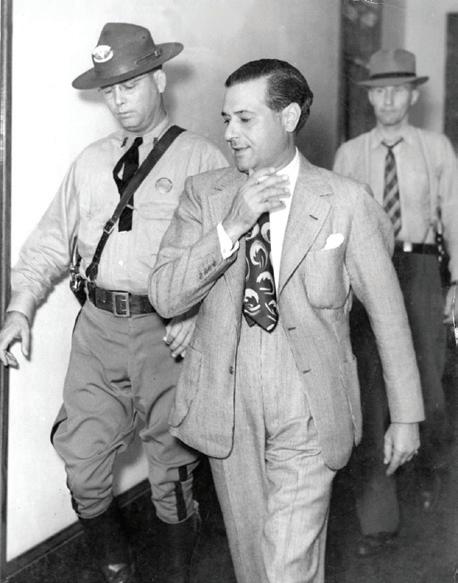
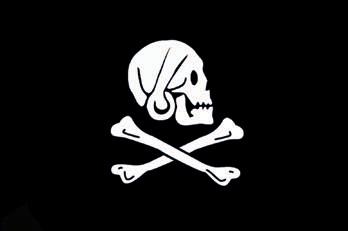


BY: JESSICA SAFAVIMEHR
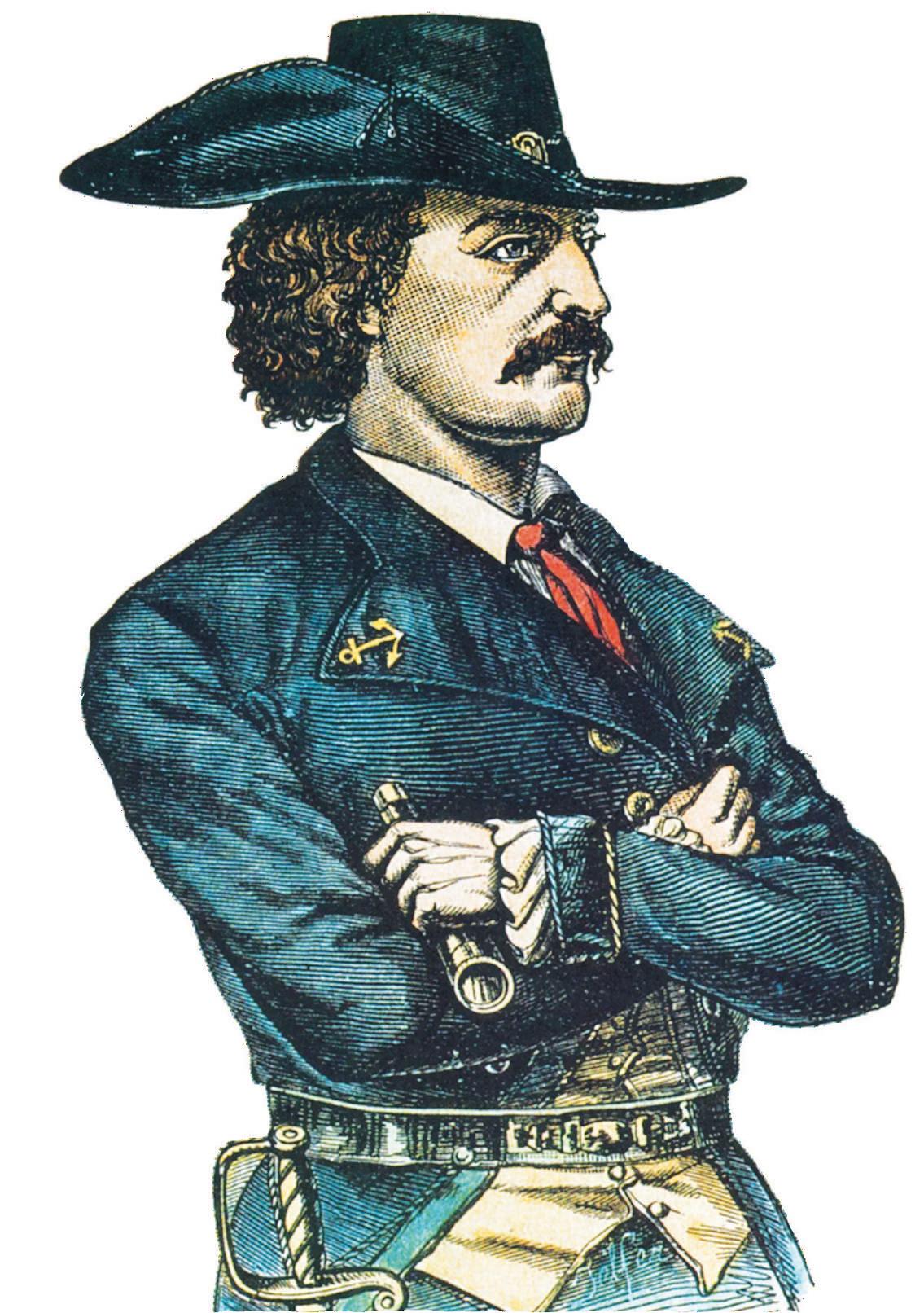
PAST IS A TREASURE TALES WHERE PIRATES, A THRIVING A WEB OF CRIMINAL ACTIVITIES
stories, one figure stands out—Jean whose influence on the island one of the most fascinating chapters in our island’s history.
Jean Laffite was no ordinary pirate. Known for his charisma and cunning, he carved out Island, turning it into a bustling legal and illicit. His contributions to the island’s development left an indelible Galveston’s economic growth status as one of the Gulf Coast’s figures.
Laffite’s journey to Galveston resulted from a tumultuous period in New Orleans. In 1814, mounting pressure from the U.S. government, keen on curbing his privateering forced Laffite to abandon swamps of Barataria. Despite offering to assist General Andrew Jackson Orleans during the War of 1812, the government remained suspicious of Laffite’s allegiances. Faced with military threats dwindling support, Laffite his sights on Galveston, hoping to establish a new base far from U.S. jurisdiction.
By 1817, Laffite had sailed to Galveston Island, then under Spanish largely ungoverned. The island’s strategic location made it ideal spot for Laffite and his who continued their privateering and smuggling operations. Upon arrival, Laffite declared the free port and established named Campeche, which grew into a thriving community attracting pirates, traders, and adventurers from across the Gulf of Mexico.

In Campeche, Laffite issued letters of marque under the Mexican Republic's authority and then fought for independence from Spain. These letters allowed Laffite’s ships to legally capture Spanish vessels, with the seized goods either sold in Galveston or smuggled into the United States. Under Laffite’s leadership, Campeche became a bustling port where privateering flourished.
Despite his notorious reputation as a pirate, Jean Laffite was far from the lawless marauder one might expect. On Galveston Island, where he established the settlement of Campeche, Laffite wielded a surprising degree of authority and discipline over his followers. Unlike the chaotic image often associated with pirate havens, Campeche operated under a strict code of conduct enforced by Laffite himself. He was keenly aware that unchecked piracy could lead to internal strife and draw unwanted attention from powerful nations. To maintain order, Laffite implemented rules that prohibited his men from looting ships allied with their cause or harming innocent civilians.
This code was not merely a gesture of goodwill; it was a calculated move to foster a sense of stability and trust within the community. Laffite understood that to sustain a thriving settlement, he needed to ensure that Campeche remained a place where trade could flourish and where the local populace felt secure. By curbing the more reckless tendencies of his men, he created an environment that attracted traders, merchants, and adventurers from across the Gulf of Mexico. This sense of order was crucial in transforming Campeche from a mere pirate hideout into a bustling hub of commerce.
However, Laffite's activities did not go unnoticed by the powers that be. The United States, increasingly wary of pirate activity in the Gulf, kept a close watch on Laffite’s operations. Although he had once aided the U.S. during the War of 1812, Laffite’s continued privateering posed a threat to American interests in the region. The government, mindful of the strategic importance of the Gulf, saw Laffite as a rogue element that needed to be contained.
Spain, too, had its eyes on Laffite. Despite Mexico’s struggle for independence, Spain still claimed Texas as part of its territory, and Laffite’s presence on Galveston was seen as a direct challenge to Spanish authority. His issuance of letters of marque under the authority of the Mexican Republic, which allowed his ships to legally capture Spanish vessels, only exacerbated tensions. Spain viewed Laffite not just as a pirate but as an insurgent supporting a rebellion against the Spanish crown.
As Laffite continued to navigate these treacherous waters, he found himself increasingly caught between the competing interests of the United States, Spain, and the fledgling Mexican Republic. While he managed to maintain a delicate balance for a time, the growing pressure from these powerful nations would eventually force Laffite to abandon his stronghold in Galveston, leaving behind a legacy as one of the Gulf Coast's most enigmatic and controversial figures.
Laffite navigated this complex political landscape remarkably, balancing his privateering with diplomacy. He cultivated relationships with local and foreign officials, using bribes and promises to maintain his autonomy. But by 1820, pressure from the United States and Spain had increased. The final blow came in 1821 when the U.S. Navy, under Commodore James Biddle, arrived at Galveston to enforce an ultimatum: leave or face military action.
Recognizing that his time in Galveston was up, Laffite agreed to evacuate. Before leaving, he ordered his men to burn Campeche, ensuring nothing of value was left behind for his enemies. On May 7, 1821, Laffite and his followers sailed away, marking the end of his reign on the island. Laffite’s time in Galveston was brief, but his impact was profound. His settlement laid the groundwork for Galveston’s future development as a major port, and the legends surrounding his life added to the island’s mystique. Even today, stories of buried treasure, hidden pirate coves, and Laffite’s ghost continue to captivate the imaginations of residents and visitors alike.
Jean Laffite’s legacy is a testament to the complexity of his character—a ruthless privateer yet a shrewd leader who established a thriving community in the face of adversity. His influence on Galveston and the enduring myths surrounding his life ensures that he remains one of the most intriguing figures in Texas history.
If you want to find out more about Jean Laffite, we encourage you to visit the Rosenberg library, whose archives are filled with letters, drawings and articles all concerning Laffite. Take a trip to the Maison Rouge monument, once home to Laffite, where many stories of privateering and legends grew. And if you head out west on the island you will end up at Laffite’s grove and you’ll see a marker where, legend has it, a potential lost treasure awaits!
WHEN ANDREW JACKSON ARRIVED IN NEW ORLEANS WITH HIS HAGGARD ARMY, HE WAS POORLY EQUIPPED TO REPEL THE BRITISH INVASION WHICH WAS EXPECTED. With the help of local militia from all over the South, his forces were greatly expanded. The key to their success was the alliance with Galveston’s favorite pirate, Jean Laffite. Laffite had a band of experienced fighters, ammunition (flint) and guns. The Laffite brothers helped to build ramparts, and prepared for the battle. Without their help, the entire expansion of the American West might have been done under British Empire leadership.
A few years after the Battle of New Orleans, the privateer Laffite lost favor with New Orleans leadership, and moved his headquarters to Galveston, becoming in effect the Pirate Laffite. A property on Harborside, near UTMB, is believed to be the site of his Galveston homestead.
In 1994, a group of Galvestonians had been researching the history of Jean and Pierre Laffite. It seemed to them a good idea to form a Society to assist and promote the accumulation of knowledge about the time and legend of Laffite. The result of their efforts can be found at the Jack K. Williams Library on the Galveston Campus of Texas A&M University – the Archives of the Laffite Society. The Chronicles there are filled with the results of intensive work over many years.
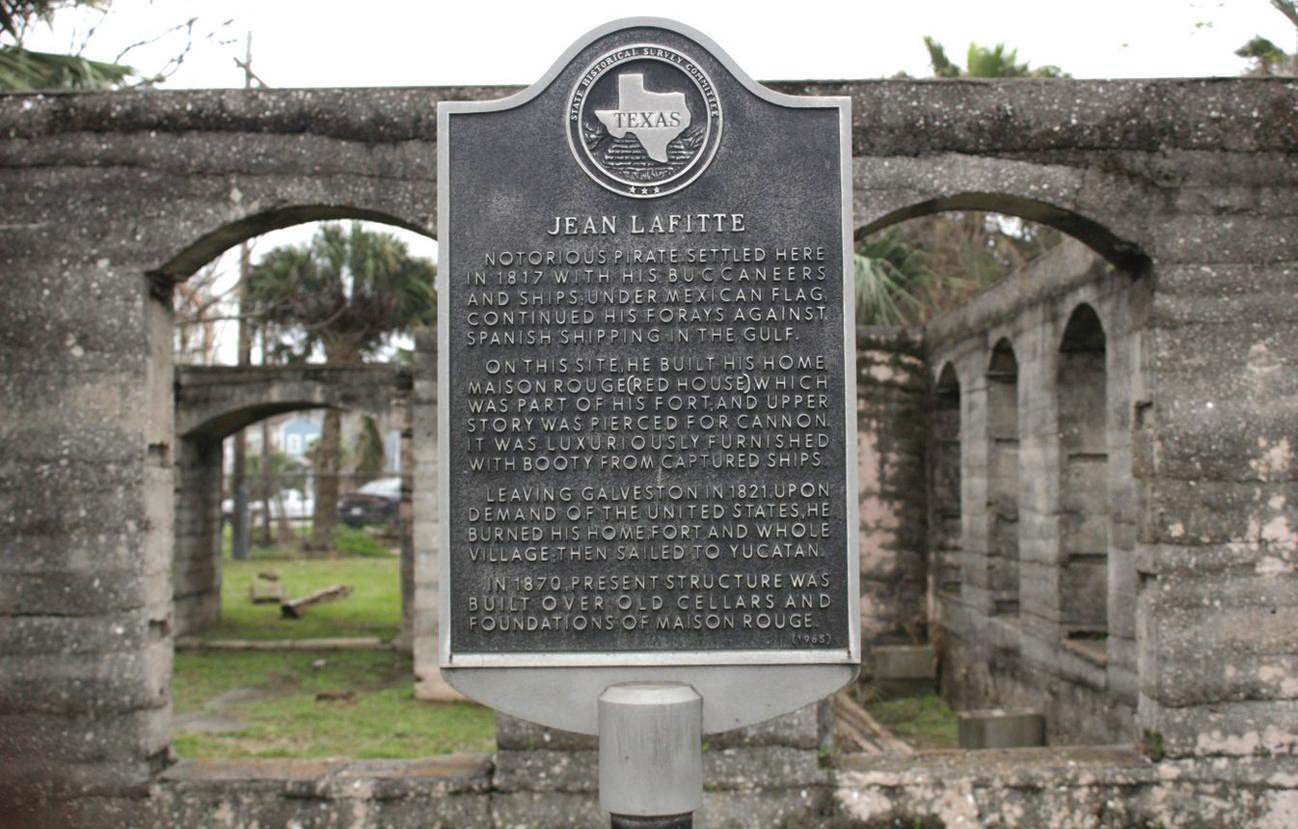
Today, the Laffite Society continues to be a lively group meeting monthly, at 6pm on the second Tuesday of each month at the Meridian (23rd and Seawall). The public is invited to join. More at LaffiteSociety.org
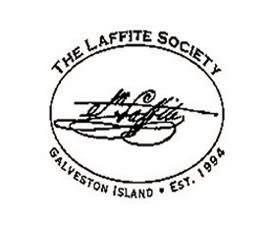
BY VICTOR VISER
GALVESTONIANS WHO CALL THIS PLACE HOME, BY BIRTH OR CHOICE, VIEW THEIR ISLAND AS A REFUGE.To them, it’s not so much a plot of silty sand elevating from the bed of the Gulf of Mexico but a floating galleon of rebel life protected from life’s musket balls by the waters insulating it from the mainland establishment. We know that the pretty painted pillars of aquatic scenery flanking the causeway are chiefly there for tourists. If it were up to some of us, we would just as soon raise a flag of skull and crossbones at the entry to our rebel redoubt, scaring away the real estate carpetbaggers and spying constables hoping to bring order to this last holdout in Texas to traditional authority.
Historically, Galvestonians have had a lot in common with the early 18th-century black flag pirates like Black Bart and Blackbeard – that is, we used to. While cotton was king to the likes of the Moody’s, vice was a virtue to most other Islanders. The Prohibition-era rum-running trade by inchoate gangs going by names such as “Downtown” and “Beach” eventually turned into a high criminal industry that operated in insolation from the violent chaos of urban centers such as Chicago and New York during the Roaring Twenties. Taking their cue from Jean Laffite, the French pirate of the “golden age of piracy” who operated in the Gulf in the early 19th century and founded the colony of Campeche on Galveston Island, the Island’s underworld buccaneers, such as brothers Sam and Rose Maceo, collectively founded the Free State of Galveston. In the Free State (or the Republic of Galveston Island as it was also known), local authorities turned a convenient blind eye to illegal activities while routinely accepting booty bribes passed under the table. Like the Caribbean pirate havens of Tortuga and Port Royal, early to mid-twentieth century, Galveston was an open city where vice was, in fact, quite a tourism draw.
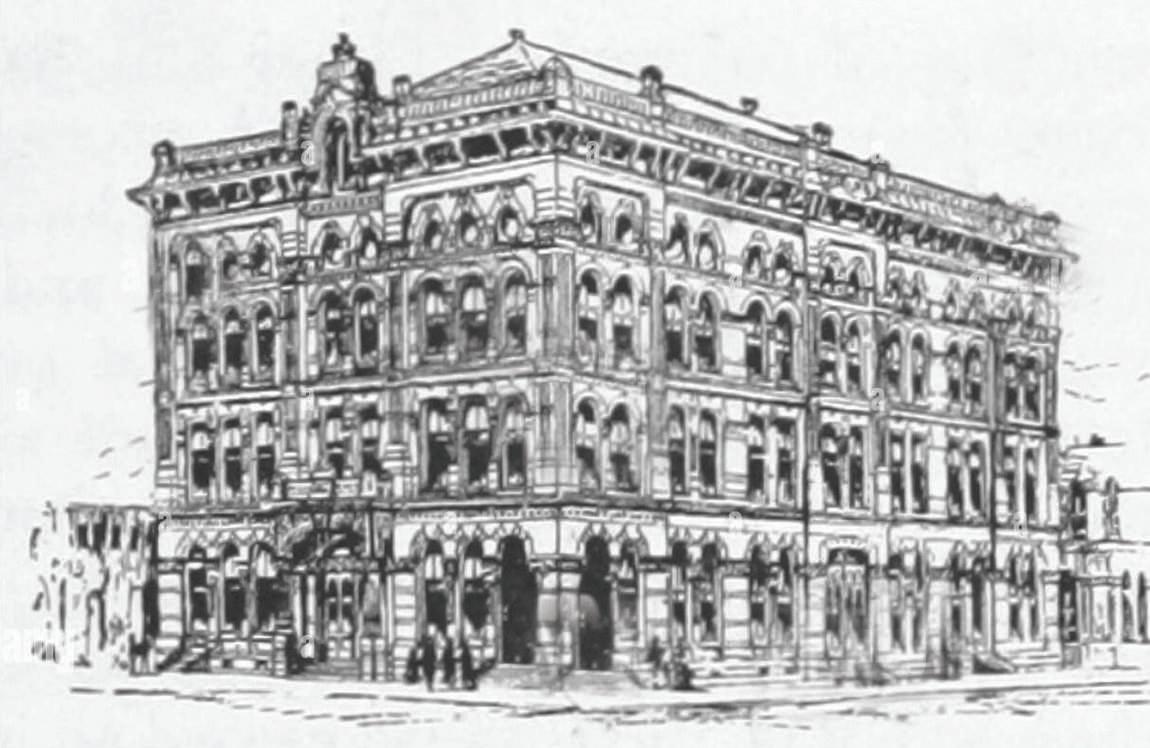


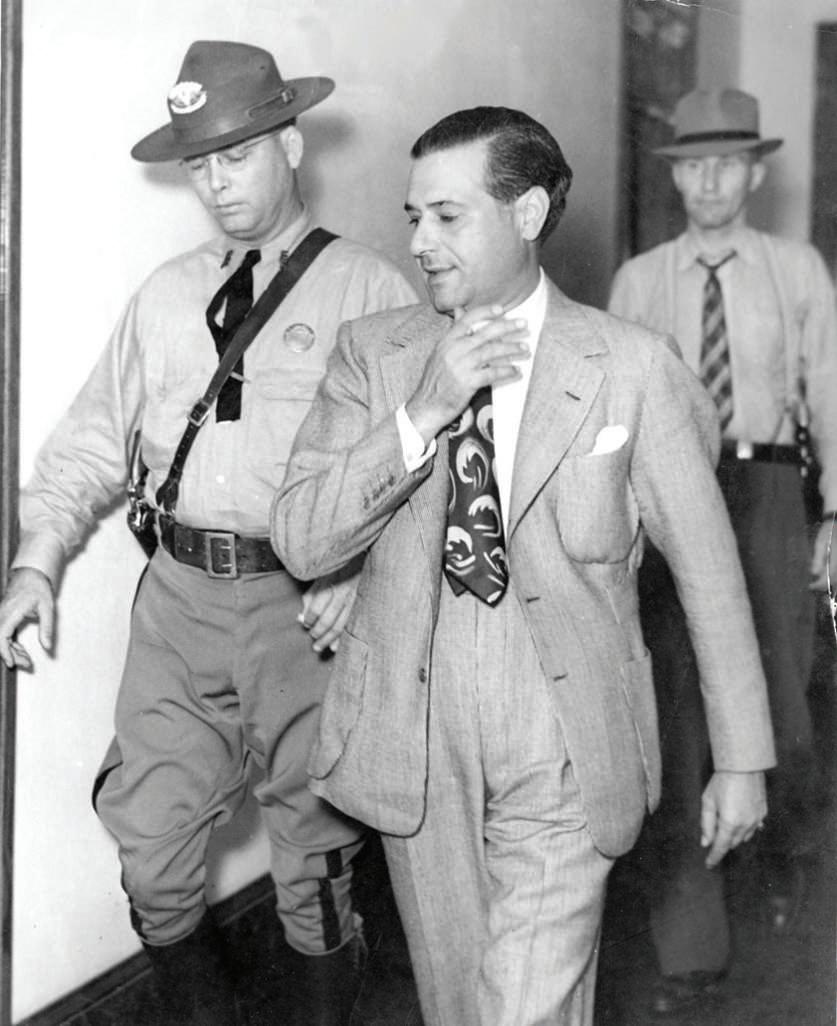
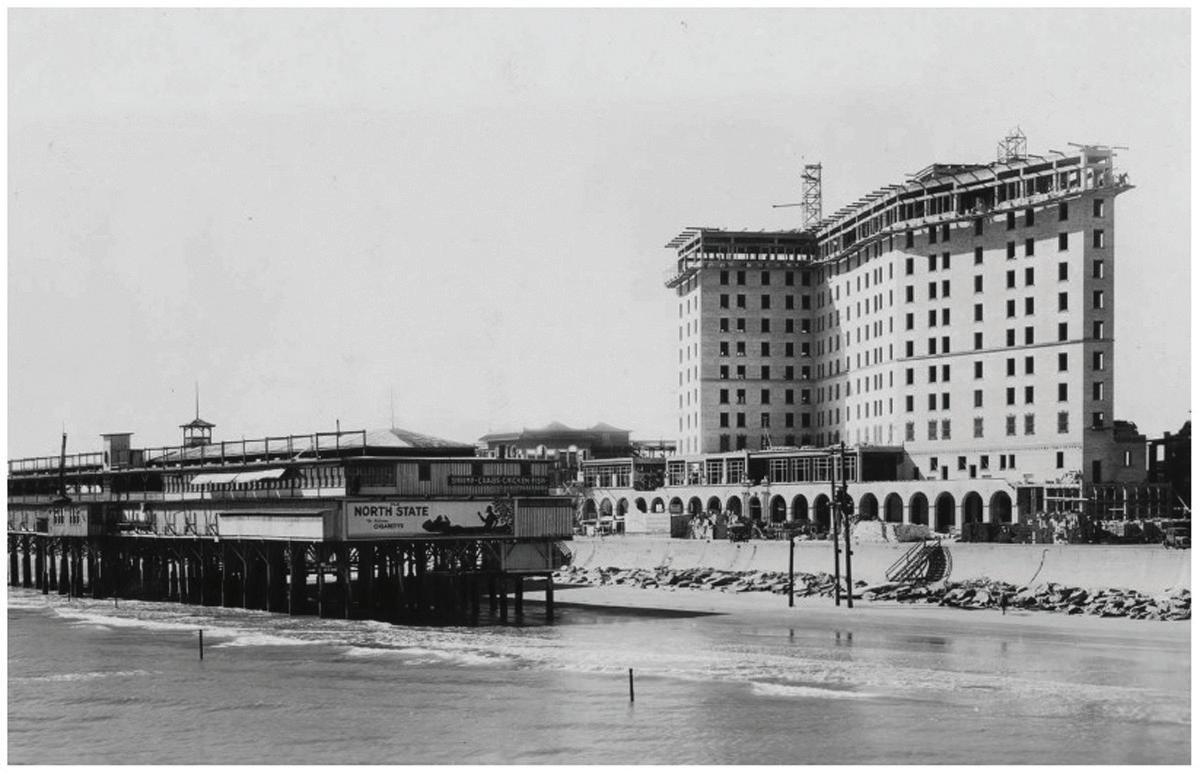

Like the Caribbean pirate havens of Tortuga and Port Royal, early to midtwentieth century, Galveston was an open city where vice was, in fact, quite a tourism draw

Certainly, the trope of rebellious Galveston has been profitable to many looking to turn a buck on it. In 1929, the Moody’s built their pirate namesake luxury hotel, The Buccaneer, at 22nd and Seawall, and then followed that with their mid-century modern, anti-pirate sounding Jack Tarr Hotel in the 1940’s. Also, in the 1940s, the Maceo brothers converted their restaurant at 21st and Seawall into what was a truly authentic ‘pleasure pier’ with the exotic pirate haven moniker of Balinese Room. An extension of the pier club out to over 600 feet from shore made it not quite in international waters but that much harder for the police to snag the illegal gambling activities located at the end of it.
Of course, no pirate haven would be complete without the prostitutes. And, prostitutes Galveston had in abundance in a red light district segregated along Post Office Street known as “The Line.” Like their pirate captain counterparts, many madams took on rascally names – Mother Harvey, Queen Laura, and Madam Janet (the latter particularly well known for offering a menu of unique sexual “perversions” to her clients).
As they say, all good things must come to an end, and the Free State would, in time, run its course. With the usefulness of Galveston’s open city vice waning for an increasingly conservative state, the Maceo’s Balinese Room would be raided into oblivion, the whorehouses would (eventually) be shuttered, and the gambling. . .well, the jury is still out on that, its usefulness seeming to make a comeback to modern Island buccaneers such as BOI, Tilman Fertitta. But, here we are at the end of IH-45, a port haven still a bit removed from traditional authority as any American can be. Some of us remain believers, that we are the last pirate holdouts against a world
dominated by states and corporations. We dare to imagine ourselves separated spiritually, if not geographically, from the mainland chaos, isolated and protected here on our little islandas-galleon off the coast of the United States.
To be sure, Galveston's twentieth-century Golden Age of Roguishness – the open city era of freedom for gambling, prostitution, liquor, etc. – was the very simulacra of the piracy mythology. But piracy is, after all, a subjective matter. If Johnny Depp’s characterization of pirate Jack Sparrow has told us anything, it’s that we can make our own rules that suit our lives. However, for us Galvestonians who still consider ourselves as corsairs plying the Gulf waters off the shore of the United States, like early plunderers such as Captain Kidd and Jean Laffite must have felt near their end, we’re starting to see that rebel lifestyle erode little by little bit with each new absent owner short-term rental popping up all over the place. Sadly, there is an obvious correlation between the increase in those rentals and the decline in our localized pirate culture. And, the only pieces of eight we see now are the plastic ones tossed out of Mardi Gras floats with a great flourish by men in tuxedos and women in furs (except, oddly, from the costumed pirate wannabes who always seem quite stingy with their doubloon tossing – take note, costumed pirates).
I remember traveling to Galveston as a young boy. Coming to that hump before the Seawall and then surmounting it, the sight of the Gulf always thrilled me. But it wasn’t really the beach and surf that my brother and I were after. It was Jean Laffite’s treasure chest, which our father told us was buried there someplace in the dunes, and we were determined to find it with our red tin shovels – even if it took us all day. Now, as a rebel who calls this place home, I still think I can find Laffite’s treasure. Maybe, though, it’s not in the dunes. Maybe it’s right here on my block where I live with the other Galveston rogues.
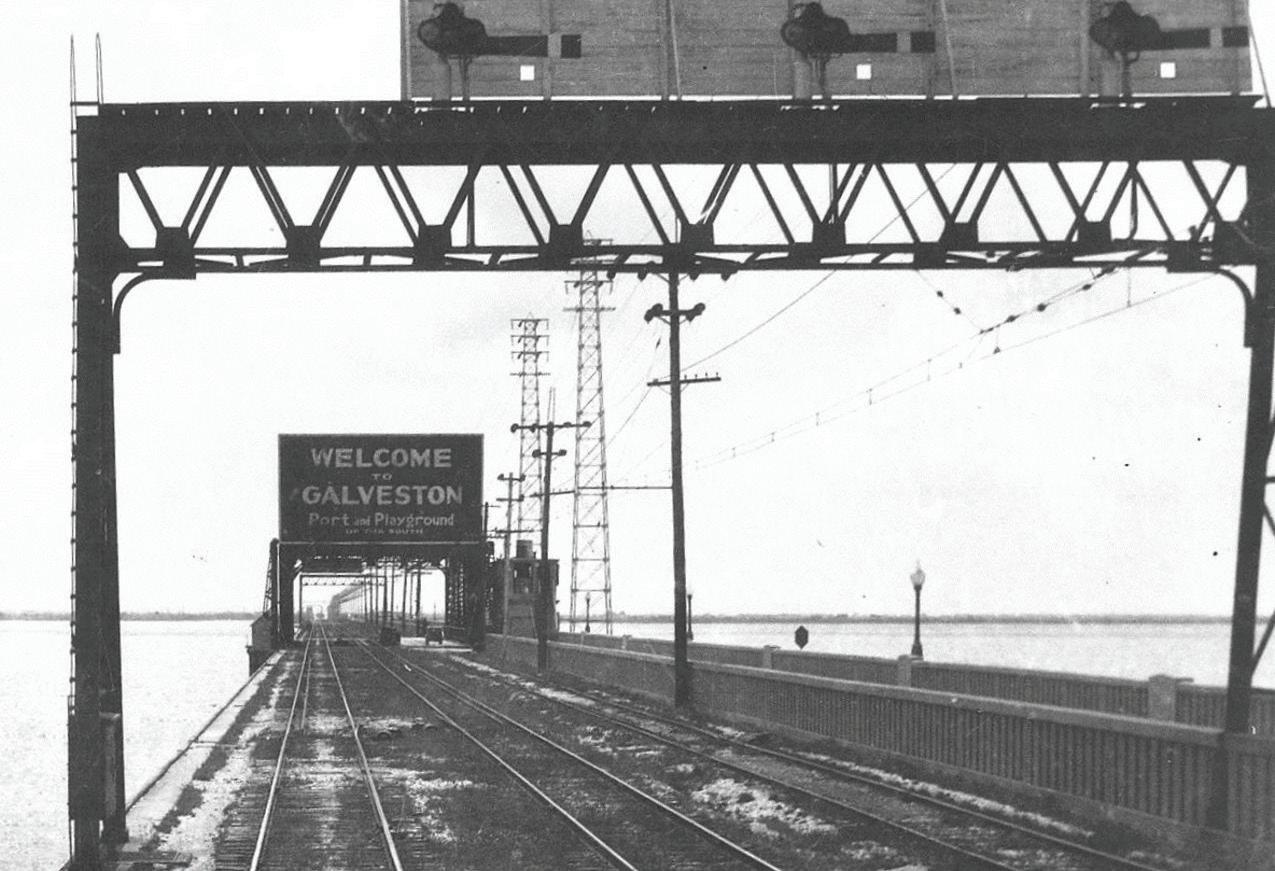
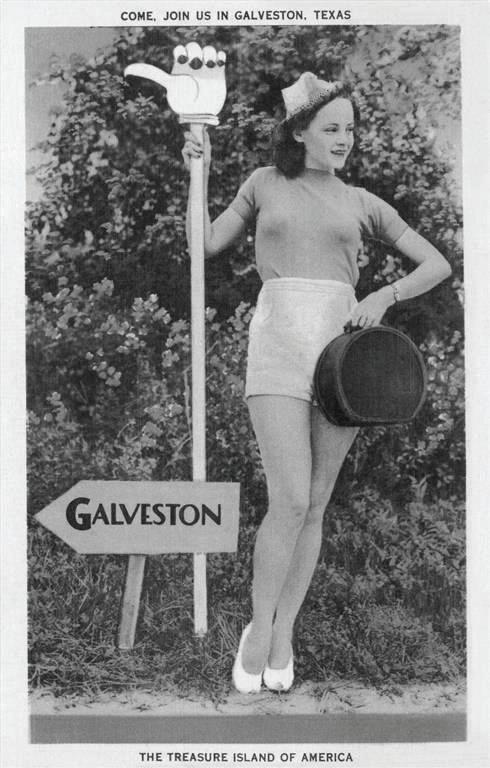

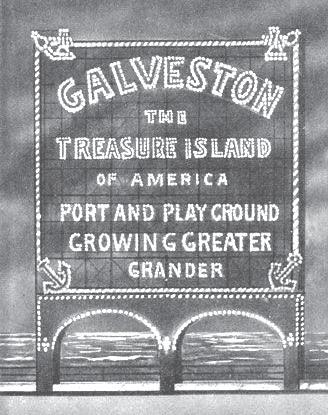
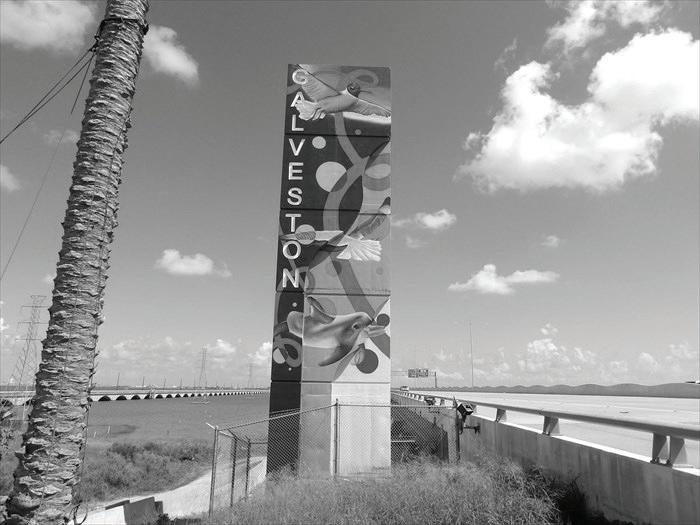
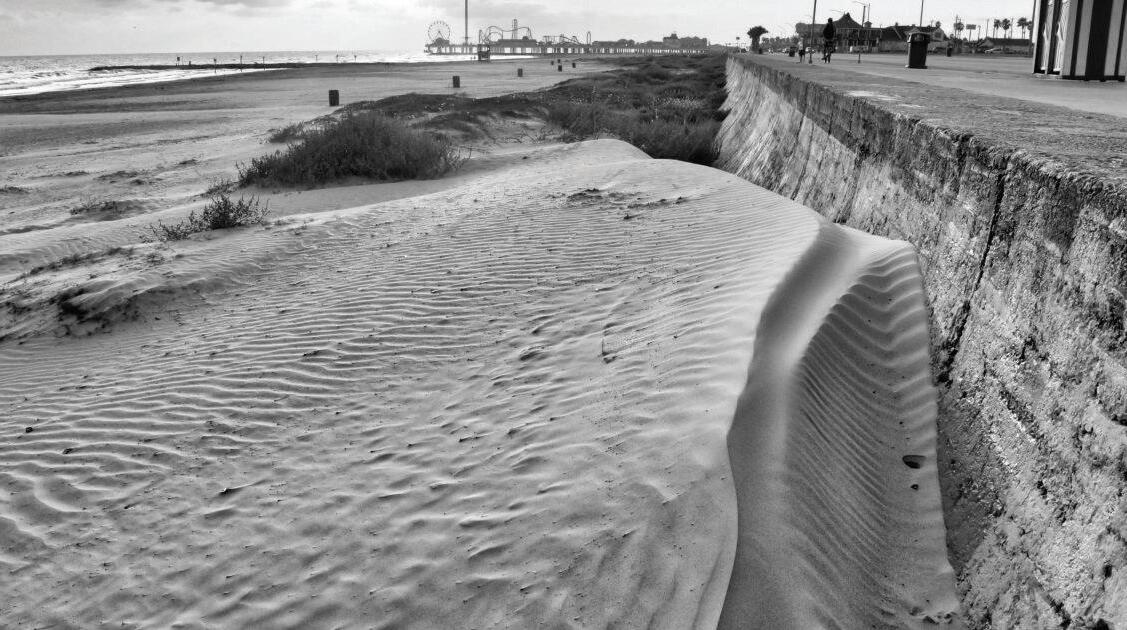

Chapter Meeting Second Thursday of Each Month at Beerfoot Brewery at 6PM




Enjoy Signature Craft Cocktails Daily!

Live music: Every Thursday 6-9PM
We want to preface this map by acknowledging that we do not know the exact location of Laffite's treasure, or if there is actually treasure buried on the island. From our research we can pinpoint where Laffite’s men might have helped bury the treasure if there was one.
Keep in mind that the island looks a bit different than it did in the 1800s and please be respectful of the locations and owners of the land where this “treasure” might be. Laffite's Cove Nature Perserve
Island State Park

LandmarkerGrove

Our staff went on a virtual treasure hunt that included hours of research, talking to historians and Laffite society members as well as a trip to the Rosenberg Library archives. What we have found is the possibility that there might be a hidden treasure or at least artifacts relating to Laffite somewhere on the island.
Did we get it right?
Send us a DM on social media with your thoughts and stories you may have heard about the treasure @cultureclashmagazine
BY DAN MARKS
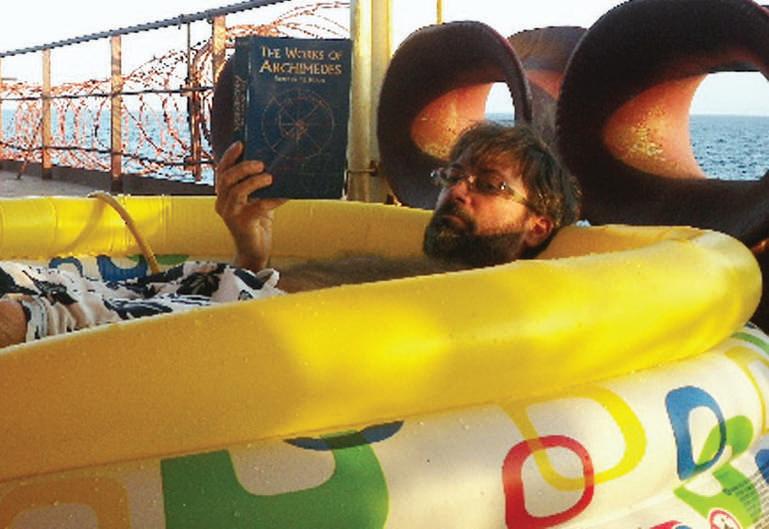



“WE KNEW WE WERE IN INDIAN COUNTRY.” THIRD ENGINEER JOHN CRONYN, MAERSK, ALABAMA, TAKEN BY SOMALI PIRATES IN APRIL 2009.
Domestic piracy is a niche market. Really, who would expect a ship to get hijacked right off the South Jetty? This guy right here. That’s who. After receiving my first Merchant Mariner’s license, I hooked up with Tidewater. What’s a nice way to say this? It wasn’t my favorite job. It was August 24, 1992. I reported to my boat in Houma, Louisiana. The off-going mate was packed and ready to go. “How long you been here?” I asked. “Oh, just a couple days,” he replied. “I just wanna be gone before Andrew gets here tomorrow.” No one had to ask who Andrew was. He had just leveled Miami as a Class 5 and come out the other side of Florida still picking for a fight. That was the highlight.
My next few tours were spent fantasizing about taking over one of these boats, driving it to Mexico, and selling it to the highest bidder. It was a simple plan: run a dinghy alongside once the supply boat was outside the jetties. I’d come aboard aft, but not too far aft, so the bridge watch wouldn’t see me. Then, secure everyone in their rooms and set them adrift once far enough off the coast. Wouldn’t Tidewater notice the boat missing? GPS wasn’t available yet. As long as I made the fleetwide roll call by shortwave at 0100, they’d be none the wiser. Why did I never pursue the world’s second-oldest profession? Because I got a real job.
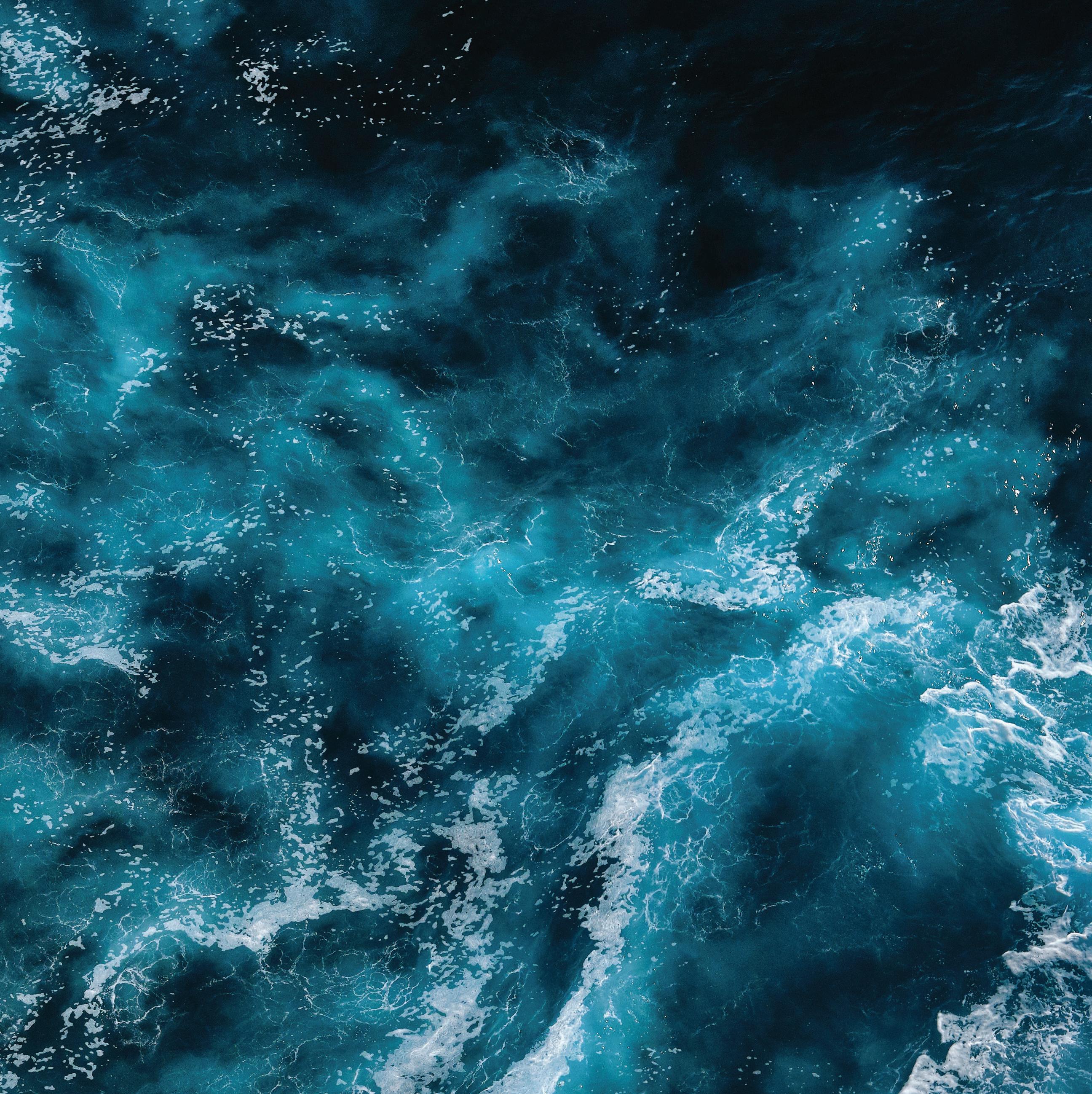
My “real job” involved large cargo ships and pirate waters: the Red Sea, Malacca Strait, the Horn of Africa, the Southeast Caribbean, and the Strait of Hormuz. In the early 2000s, Malacca Strait was the worst. One Fathom Bank to Horsburg Light was a path to excitement. We tied dummies to the rail with wooden guns, patrolled the decks in shifts, and tracked every little ferry and fishing boat like air traffic controllers at LaGuardia. A tsunami in Indonesia put a pause on that. But were we out of the woods? No. George W. Bush had a personal beef with Saddam Hussein, and the Persian Gulf was about to light up. My last job in 2003 was aboard the SS Northern Lights. The Alaska ship had just been tasked to retrieve gear from Iraq. The Alaska crew took a vacation, and the relief crew, including our Bosun, were drawn almost entirely from the Gulf Coast.
It turned out that Jay White lives just blocks away. Jay has gone on to other ships, most recently the MV National Glory and the Natty G. He travels between Houston and Puerto Rico regularly, and his ship regularly encounters refugees from Cuba and Haiti. Are they pirates? Eh, they could be if you let them aboard.
In 2005, I joined the MV Vera Cruz in the Persian Gulf. Captain Mara kept us out of trouble on several occasions. In particular, the company directed us to spend the evening in the Euphrates River to dock at first light. Captain Mara instead slow-belled it offshore, keeping the Navy’s Fifth Fleet between us and the beach. And that's a good thing. Weeks before, and one week later, other ships were attacked because they listened to the office without engaging in common sense. The mission had already been “accomplished,” but Iraqi naval assets were still active and running as pirates during hours of darkness.

When we returned to Cagliari, Italy, Captain Mara was relieved by Richard Phillips. Captain Phillips had a reputation. And on day one, he seemed to live up to it. Suffice it to say, we wondered whose side he was on. Years later, the Vera Cruz was from service and replaced Maersk Alabama. Captain Phillips command of the new ship before being relieved by Tom Hanks. When the Maersk was taken by Somali pirates in 2009, had two Galvestonians and one Houstonian with him. First Engineer Matt Fisher, Third Mate Colin Wright, and Steward’s Assistant Mario Clotter. Matt had also served on Vera Cruz. Colin and Mario, along with Mario’s Dad Tibby, later served on Sulphur Enterprise, sailing between Galveston and Tampa. Only six months ago, Rick Boullion, another Galvestonian, sailed his ship through the straits north of Somalia.
Houthi forces in Yemen had successfully taken another ship from those same waters. Rick directed his crew to scatter debris about the decks to thwart a helicopter landing. They also carried an armed security team. US Naval presence was stepped up for the first time since the Alabama incident. The Houthis are trained units boarding by helicopter and attacking ships with missiles and drones. They claim sympathy for the Palestinians in Gaza. Others claim they are mercenaries backed by Iran. Are they legitimate military or just pirates? Well, a little history here. There are privateers, and there are pirates.
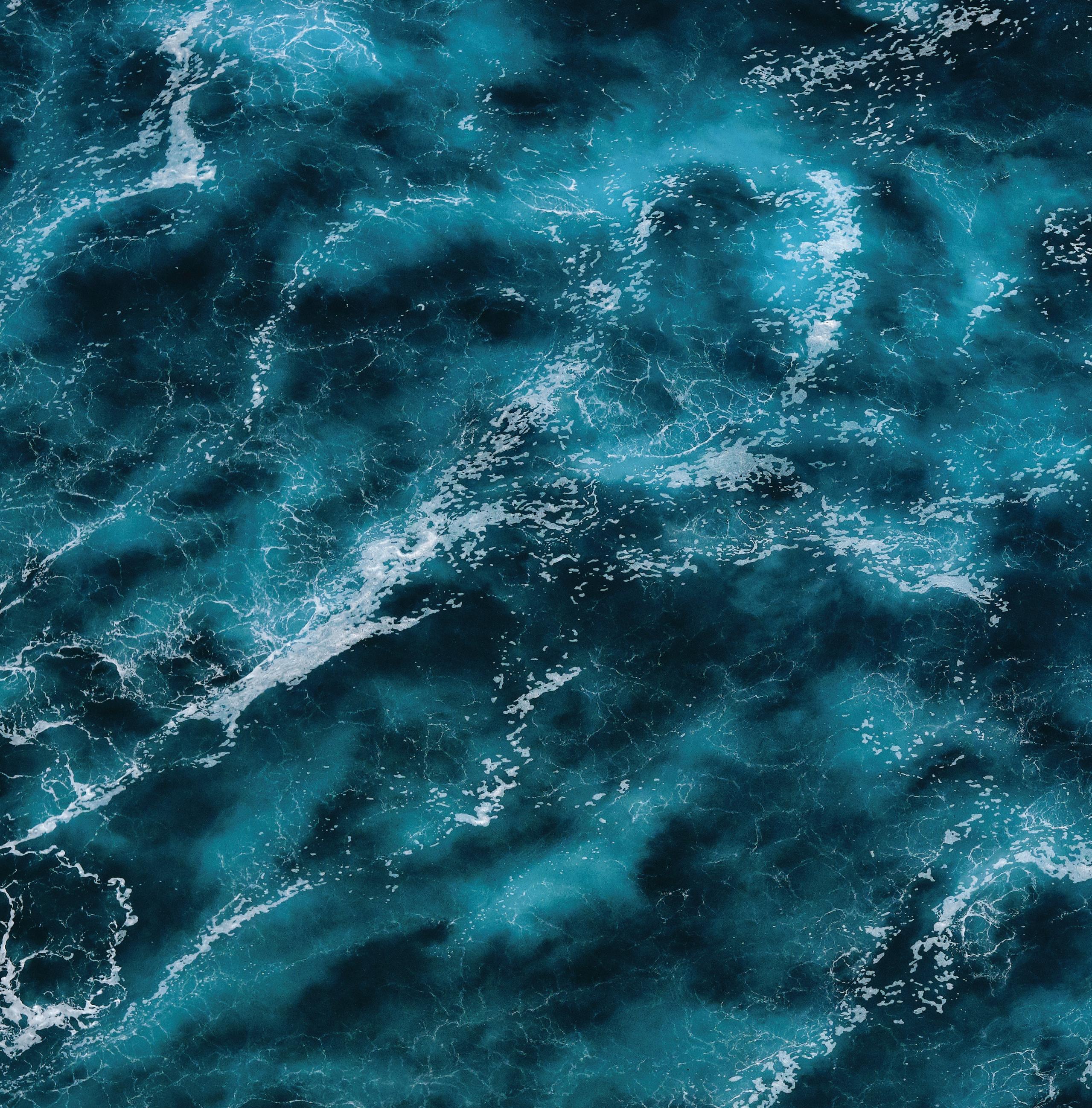
Privateers operate with permission from nation-states. They operate under rules that are much more lax than the professional military. Pirates? Pirates don’t abide by any rules, at least rules imposed by the “Man.” They simply turn their skills for fun and profit. Many of your favorite pirates moved back and forth across fuzzy lines as circumstances allowed. The Laffite Brothers were smugglers, militia in the War of 1812, privateers for Colombia and Mexico, and pirates during the lulls in between.
Piracy has existed as long as shipping. It is mentioned in our oldest literature and lore. The Golden Age of Piracy occurred from the late 1600s to the early 1700s and included Edward Teach (Blackbeard), William Kidd, and Henry Morgan. These were privateers whose titles changed with the political tides, not always favorably. Captain Kidd, for instance, was a privateer backed by the Whig Party. He was given a Letter of Marque in 1695 from the Earl governing colonial New England. He was explicitly tasked with hunting pirates. He navigated the legal waters of his profession poorly, however, and was tried and hanged as a pirate by the Tory Party upon his return. Other pirates were more successful, accepting a pardon and becoming pirate hunters and governors of far-flung British possessions. Some simply accepted pardons to escape the noose, sailed farther afield, and resumed their piratical ways.
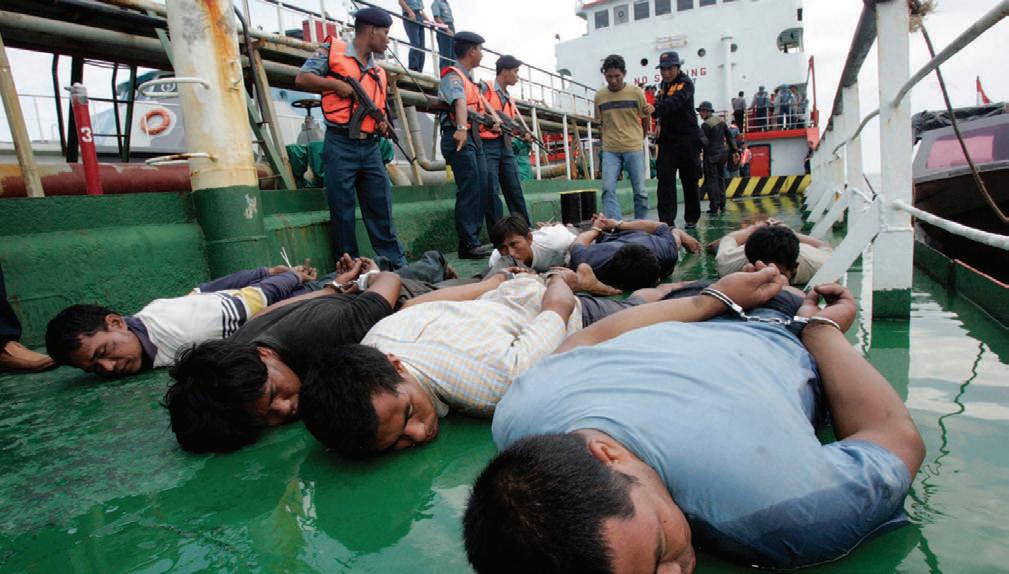
Some “pirates” were political criminals fighting colonialism around the world. Emilio Salgari’s fictionalized Sandokan revolted against the British. Fighting oppression is such a popular theme that Sandokan inspires TV, movies, and fan fiction to this day. Confession! I am a big fan of the Tiger of Malaysia! Muriel Stuart Walker, a real person, moved to Bali in 1932. She was soon adopted by a local Rajah and named K’tut Tantri, Fourth Daughter. She worked as a smuggler, spy, and pirate radio broadcaster in the fight for Indonesian independence. Unlike most “pirates,” she lived to a ripe old age.
I have been warned by author and historian Jim Nelson against romanticizing pirates too much. They were often opportunists of loopholes in the law and the vastness of the sea. They were also experienced naval or merchant men. But career life was about two years once they’d joined the Brethren. And, as the noose closed in, they weren’t afraid to fight their way free. The same is true for modern pirates. The Somalis used to hold the crew hostage until a ransom was paid. Then Alabama happened, and three Somalis were killed. Within days, the MV Liberty Sun was attacked with RPGs strictly for revenge, and two couples on a private yacht in the Indian Ocean were killed for resisting. Thank God that’s all ancient history, though. Or on the other side of the world, eh?
Now, my mornings are spent at the beach with the dogs. They play in the water, roll in dead fish, and eat chicken bones left by tourists. I look out at the water, watching the supply boats go by. I’ll have twenty years in with the Union soon. Maybe it’s time to consider a new profession.

For a map of reported modern piracy SCAN HERE

Think you know who's who in the Pirate World? Match the correct Pirate to the their flag!
Source: Top 10 Most Famous Pirate Flags And Their Meanings: by Chris Edwards
1718-1720
He got his name from other sailors because he would only wear Indian Calico cloth. Despite having one of the most famous pirate flags of all time, his career as a pirate was highly unsuccessful.
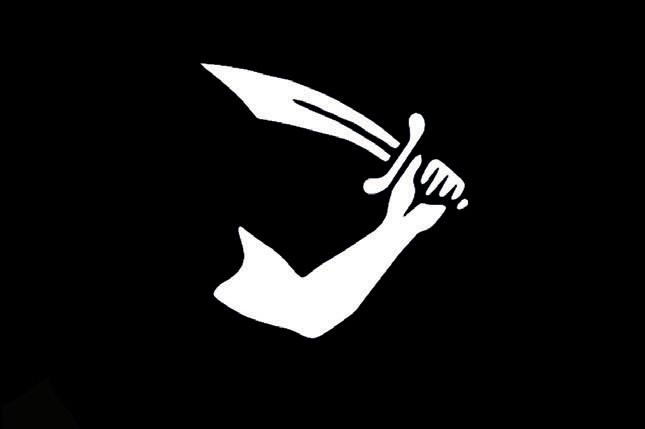

Thomas Tew 1692-1695
Thomas Tew is considered one of the founders of the mysterious pirate colony of Libertatia.
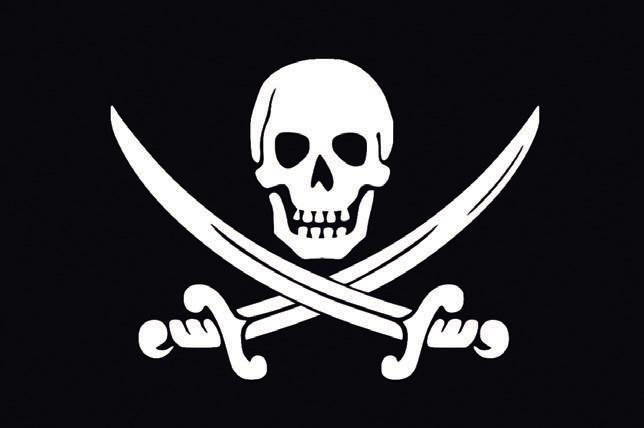
ANSWER KEY ON PAGE 25


1721-1724
Spriggs and Low are considered some of the most brutal and savage pirates of all time. They were known for always burning captured ships and torturing prisoners.
Henry Every 1694-1696
Henry Every is best known for obtaining the largest haul in pirating history by amassing 600,000 pounds of jewels, silver and gold in one day.
Edward Teach 1716-1718
2 1 3 4 5 b a d c e
When going into battle, he attached hemp rope to his beard and lit it on fire to intimidate his foes.





ARTISTS FROM AROUND THE REGION DESCEND ON GALVESTON FOR ARTOBERFEST, THE ISLAND'S BEST ART SHOW OF THE YEAR. OCT 19 & 20.
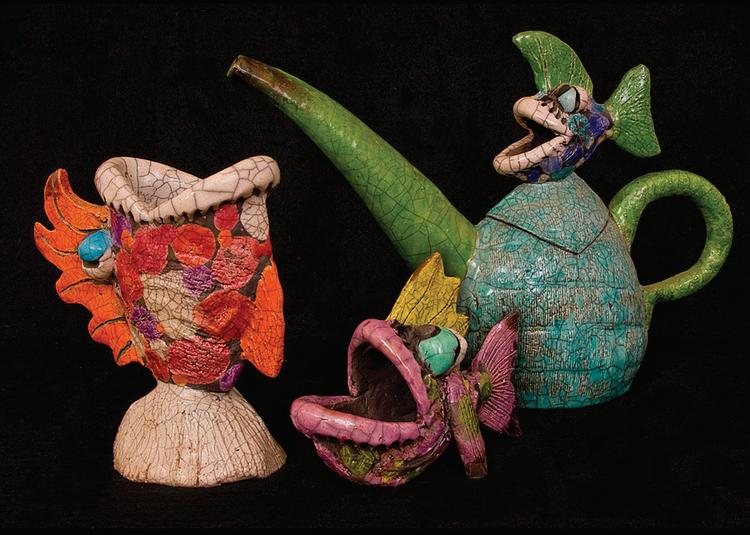
This annual event, now in its 26th year, has become a cornerstone of the local cultural calendar, drawing thousands of visitors and showcasing the diverse talents of artists from across the country.
Artoberfest was conceived as a way to celebrate Galveston’s artistic heritage and to provide a platform for local and regional artists to display their work. The event was established in the late 1990s, a time when the city was experiencing a cultural renaissance. Local artists, galleries, and community leaders came together to create an event that would not only highlight the island’s artistic talent but also attract visitors to the historic downtown area. Over the years, Artoberfest has grown in both size and reputation, becoming one of the premier art festivals in Texas.
This year’s Artoberfest promises to be bigger and better than ever. The festival will feature over 120 artists, offering a wide range of artwork, including paintings, sculptures, jewelry, photography, and mixed media. Attendees can expect to see a mix of contemporary and traditional styles, with something to appeal to every taste.
In addition to the art, Artoberfest will also offer live music, food vendors, and interactive art demonstrations, making it a perfect event for families and art enthusiasts alike. The festival will take place on Postoffice St. in the heart of Galveston’s historic downtown, providing a picturesque backdrop for the event.

Artoberfest is not only a favorite among art lovers but also highly regarded by the artists themselves. The festival is known for being one of the top-ranking venues in Texas for artist revenue, a testament to the event’s well-curated selection of artists and the strong support from the local community. Many artists return year after year, drawn by the opportunity to connect with collectors and art enthusiasts who appreciate quality work.
For those looking to experience the best of Galveston’s arts scene, Artoberfest is an event not to be missed. Whether you’re an avid art collector or simply looking for a fun weekend activity, this festival offers something for everyone, all set against the charming backdrop of Galveston’s Postoffice District.
Sat. Sept. 07, 1-10 PM
Beach Central, 2102 Seawall Blvd
Caribbean vibes, live performances, and Caribbeaninspired cuisine
Tickets: TBD
Sat. Sept. 21, 10AM - 9 PM & Sun Sept. 22, 10 AM - 6 PM East Beach, 1923 Boddeker Rd
The classic American Architecture Sandcastle competition where 40 teams of architects design monumental structures using only sand and water. But this year the event has expanded to two days and hosts a celebration filled with sandcastles, live music from local and regional bands, local vendors, and family-friendly activities. AIA Houston has partnered with La Izquierda Fest, a 501(c)(3) nonprofit organization dedicated to enriching the communities of Galveston and the Gulf Coast through surf, the arts, and fostering local culture to bring this expanded experience to life.
Tickets: $10
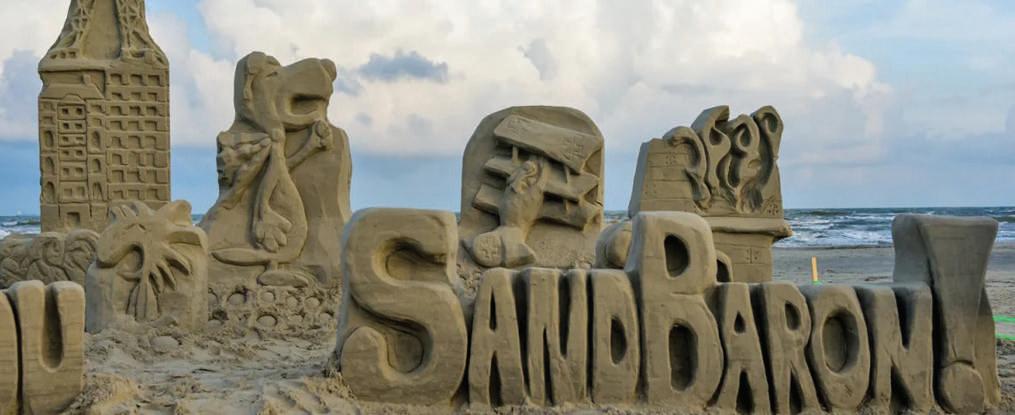
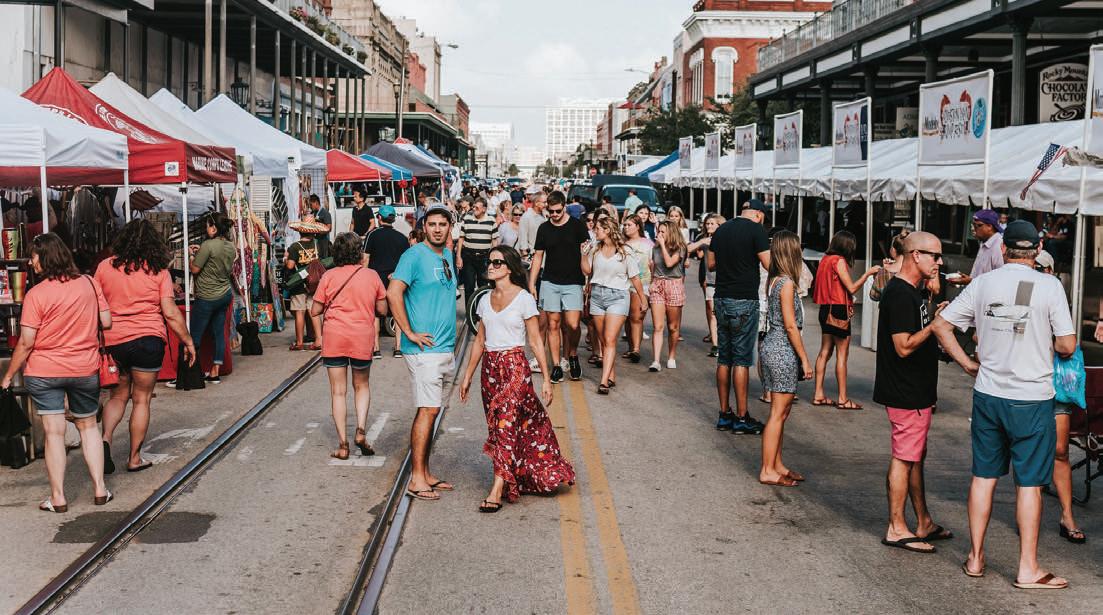
Fri. Sept. 27, 7:30 PM -10 PM & Sat. Sept. 28, 9 AM - 5 PM
Downtown, 2314 Strand Street
This shrimp-focused festival features a seafood cook-off, gumbo tasting, L’il Shrimps Parade, live music, a children’s area and a Strand merchant walkabout.
Free Admission

Sat. Sept. 28, 8:30 AM -12 PM
Menard Park, 27th and Seawall Blvd
Join thousands of Texans in this state-wide beach clean-up. The Texas General Land Office hosts 2 clean-ups a year, Fall and Spring. Each year over 580,000 volunteers clean up 11,720 miles of beach and pick up almost 10,000 tons of trash. Come out and be a part of the solution! Bring reusable gloves and 5 gallon buckets, leave the disposable plastics behind.
Free Admission
Sat. Oct. 19, 10 AM - 5 PM | Sun. Oct. 20, 10 AM - 4 PM
Postoffice District, 2020 Postoffice St.
ARToberFEST is a fine arts festival located on Galveston Island in the historic downtown cultural arts district. The twoday festival showcases the works of over 120 of the finest artists in the United States. The event brings more than 8,000 people through the beautiful downtown cultural arts district offering visitors the opportunity to meet with exhibiting artists, enjoy artist demonstrations, and enjoy food and entertainment in a historic setting.
Tickets: $5
Fri. Oct. 25, 5 PM - 9 PM | Sat. Oct. 26, 11 AM - 7 PM
First Lutheran Church of Galveston, 2415 Winnie St

This fun, family weekend will feature continuous live entertainment on two stages, an expanded menu of authentic German food and libations, Cake Wheel, shopping for fine arts, crafts and gifts in the historic 1860 Lyceum; more fun contests, beer and wine events, and fun, family children’s activities – plus much more. Again, this year… festival-goers can look forward to more of everything … that is German!
Free Admission
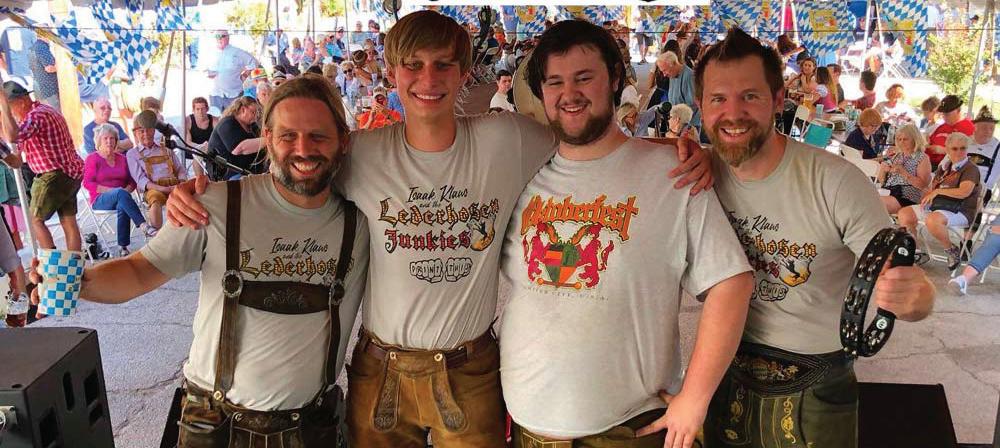
Enjoy mixed media collage, ceramics, jewelry and so much more at this annual street fest.
UNTITLED by Craig Butterworth
Infused peaflower gin Lemon juice Sugar Brute champagne TREMONT HOUSE
Tourqouise Lobby Bar 2300 Mechanic

SPONSORED BY:

Ghost Coast Festival
Fri. Oct. 11, 7 PM - 10 PM
Sat. Oct. 12, 12 PM - 1 PM
Sun. Oct. 13, 12 PM - 5 PM
League Kempner Mansion, 1702 Broadway
The Ghost Coast Festival is a family friendly event that will be held at the League Kempner Mansion in October of 2024 and will include a vendor market, celebrity speakers, paranormal investigations, ghost tours, psychic readings, kids activities, entertainment and much more. Portion of proceeds will benefit the reconstruction of the LeagueKempner House.
Tickets: $25

Galveston GraveyardFoundation Conversations
Tue. Oct. 22 | 11:30 AM - 1 PM
1815 Ashton Villa
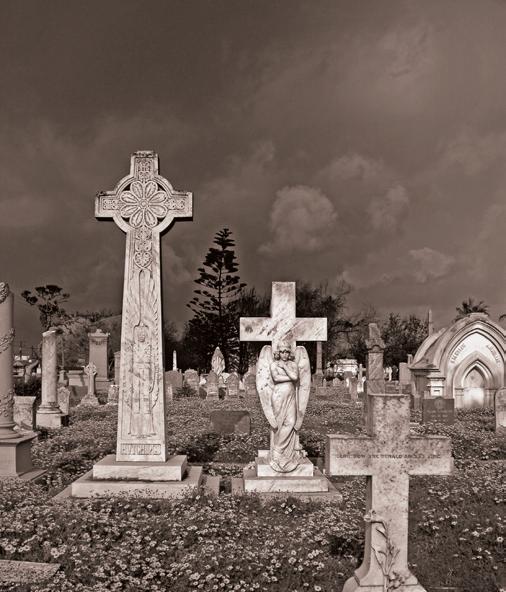
Join Galveston Historical Foundation's Jami Durham as she shares the stories and histories of many of the island's cemeteries, including Lakeview, Calvary, Municipal, Rosewood, Serbian and Greek Orthodox, Sisters of the Incarnate Word, Beth Jacob and more. GalvestonHistory.org
Tickets: $10
Rosenberg Teen Only Halloween Party
Fri. Oct. 25 | 6:30 PM - 9:30 PM Wortham Auditorium
Halloween party! Ages 13 - 18 only. Registration is required and limited to 30 attendees. Pizza and soda will be provided.
Rosenberg-Library.org

Sat. Oct. 26 | 9:30 PM
Galveston Naval Museum
Join a paranormal investigation with Paranormal Road Trippers and other paranormal investigators guiding the investigation. This is a perfect "first-timer" investigation and is suited for seasoned ghost hunters too! Tour both of the haunted vessels. SpookyGalveston.com
Halloween Spooktacular at The Bryan Museum
Sun. Oct. 27 | 12:30 PM - 2:30 PM 1315 21st Street
Halloween Spooktacular will have decorated candy stations for trick-or-treating around the Museum grounds. In addition, there will be a scavenger hunt, spooky stories in the gazebo, fall crafts, outdoor games, ghost hunt in the garden, a walking costume parade, and special photo spaces. If you get hungry for more than just candy, grab something to eat from the Space Craft BBQ food truck. Kids ages 0-12 get into the Museum free all day!
Thurs. Oct. 31 | 5 PM - 6:30 PM
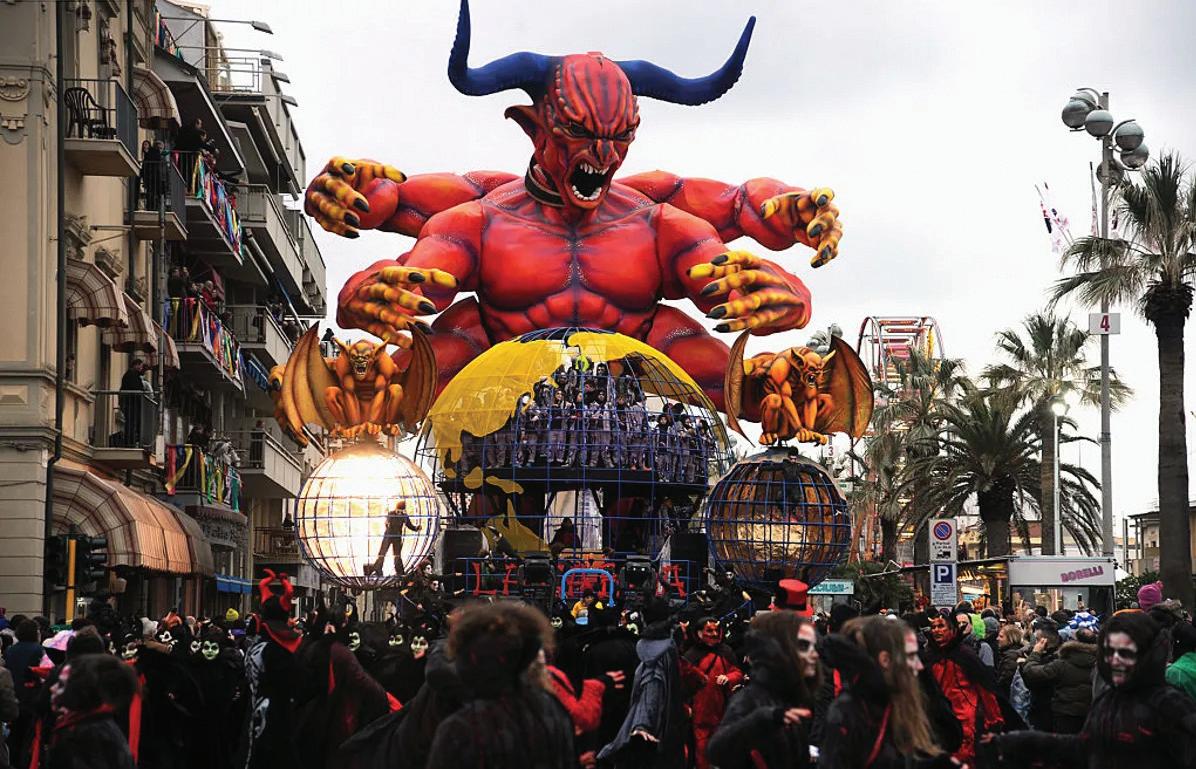
Mystical Parade of Boo
Sat. Oct. 26 | 6:30 PM
Calling all ghosts, goblins, witches, and more! The Misfits Krew, Carnes Funeral Services, & Tutu Live Krew have joined forces to bring us Galveston's first Halloween parade in the downtown area. Parade starts at 28th & Market and proceeds to 21st, and on to Strand. Check the Facebook page for community art cardboard and paper mache project making classes!
Facebook.com/MysticalParadeOfBoo
Sign up at TutuLiveKrew.com
Tickets: Museum Admission LIVE MUSIC AFTER PARTY
Galveston’s oldest residence, the 1838 Menard House opens its gates to trick or treaters for history-making fun! Individual bags of candy will be given to young guests with free admission on the property. Please note: the house will not be open for tours.
COME FOR THE PARADE, STAY FOR THE PARTY!
India Tigers in Texas
Sat. Oct. 26 | 8 PM
MarMo Plaza - 2121 Market St
Come See My Dead Person
Sat. Oct. 26 | 10 PM
Daquiri Time Out - 2701 Market St

BRENNA BARKER BARTENDER BAR 43
Voodoo lounge used to be a brothel, trash cans flipped over, glasses flew off the racks. All 12 of us who worked there experienced it. We heard it was a kid but we aren’t sure who died and who was doing it. I heard the railroad museum was haunted as well.
MATT WOODWARD ONLINE RESPONSE
The San Luis Resort has enough power supply and back up generators to power a casino floor. If [gambling] becomes legal, all they have to do is plug in the slot machines.

AMY HAWK BARTENDER THE POOP DECK
Jean Laffite had two dogs that guarded his home and they're supposedly still there and if you hear dogs or see their eyes you are going to die.
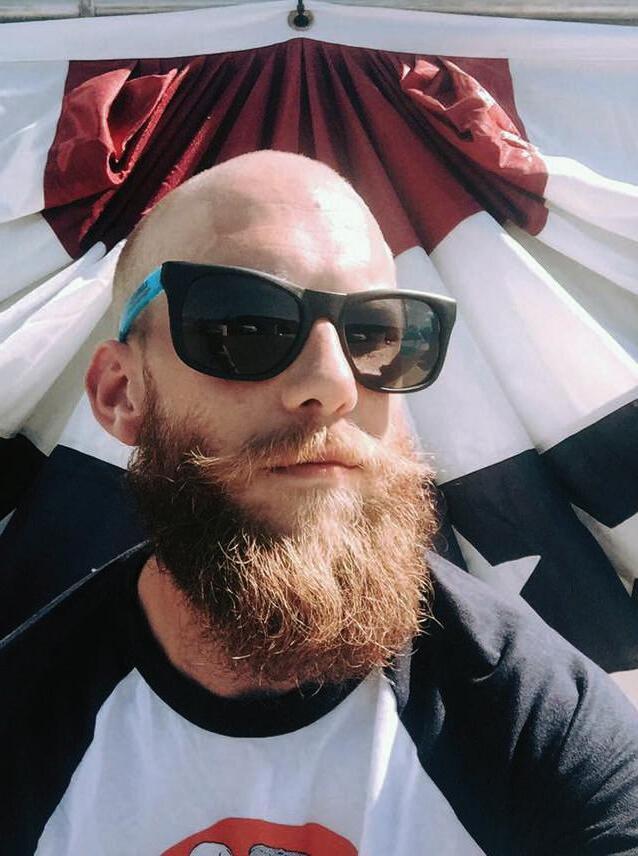
Where the Walmart sits today, used to be an orphanage and during the 1900 storm all the children perished. Workers have made claims that they had experiences where they find toys on the floor or hear giggles in the isles.
JAMES ANDERSON HISTORIAN & AUTHOR

The Texas heroes monument points to where the Battle of San Jacinto and Anahuac occured. The men of Fort Crocket would come to Galveston and brought their sons. If their sons wanted to have some companionship for the evening, they would tell their sons to look at where the monument is pointing. It points to the redlight district.

Jean Laffite had the Kingdom of Campeche. The Governor at the time wanted him out and put a bounty on his head, but then Laffite put a higher bounty on the Governor's head so he could stay. Personally, my grandfather was a bootlegger and made a whole bunch of money, went back to Mexico and bought some land.







